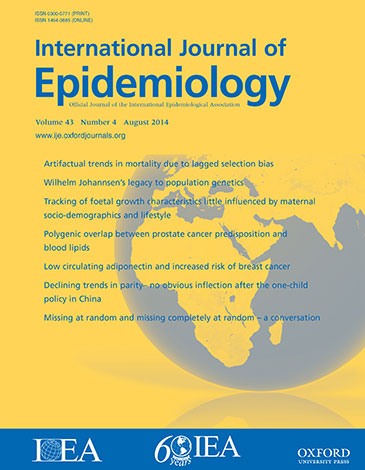The impact of violence and COVID-19 on Mexico's life-expectancy losses and recent bounce-back, 2015-22.
IF 5.9
2区 医学
Q1 PUBLIC, ENVIRONMENTAL & OCCUPATIONAL HEALTH
引用次数: 0
Abstract
BACKGROUND Before the COVID-19 pandemic, life expectancy in Mexico stagnated from the early 2000s, mainly due to increased homicides. During the pandemic, Mexico experienced sizable excess mortality. We aimed to assess the contribution of violence, COVID-19, and causes of death that were amenable to healthcare to life-expectancy changes between 2015 and 2022 in Mexico. METHODS We used administrative mortality and adjusted population estimates to construct life tables. We applied demographic methods to untangle contributions of causes of death to life-expectancy changes by year and sex at the subnational level. RESULTS Between 2015 and 2019, life expectancy declined from 71.8 to 71.1 years for males and stagnated at 77.6 years for females. Violence among young males explains most of the decline (54.3%). Between 2019 and 2020, life expectancy decreased by 7.1 and 4.4 years for males and females, respectively. COVID-19 accounted for 55.4% of that change for males and 57.7% for females. In 2021, male life expectancy stagnated but continued to decline for females by 0.44 years due to COVID-19 deaths. In 2022, we observed unequal recovery patterns in life expectancy across regions, as northern states experienced larger improvements than central and southern states. CONCLUSION We documented large variations in life-expectancy losses across Mexican states before, during, and after the COVID-19 pandemic. Before the pandemic, violence accounted for most of the male life-expectancy losses. During the pandemic, following COVID-19 deaths, mortality due to diabetes and causes that were amenable to healthcare contributed considerably to observed losses, with an uneven impact on the sexes.暴力和2019冠状病毒病对墨西哥预期寿命损失的影响及近期反弹,2015-22年。
在2019冠状病毒病大流行之前,墨西哥的预期寿命从21世纪初开始停滞不前,主要原因是凶杀案增加。在大流行期间,墨西哥经历了相当高的死亡率。我们旨在评估墨西哥2015年至2022年期间暴力、COVID-19和可接受医疗保健的死亡原因对预期寿命变化的贡献。方法采用行政死亡率和调整人口估计值编制生命表。我们应用人口统计学方法,在次国家一级按年份和性别分类,理清死因对预期寿命变化的贡献。结果2015年至2019年,男性的预期寿命从71.8岁降至71.1岁,女性的预期寿命停滞在77.6岁。下降的主要原因是年轻男性的暴力行为(54.3%)。2019年至2020年期间,男性和女性的预期寿命分别下降7.1岁和4.4岁。COVID-19占男性变化的55.4%,占女性变化的57.7%。2021年,男性预期寿命停滞不前,但由于COVID-19死亡,女性预期寿命继续下降0.44岁。2022年,我们观察到不同地区的预期寿命恢复模式不平等,北部各州的预期寿命改善幅度大于中部和南部各州。结论:我们记录了在COVID-19大流行之前、期间和之后,墨西哥各州预期寿命损失的巨大差异。在大流行之前,暴力是男性预期寿命损失的主要原因。在本次大流行期间,继COVID-19死亡之后,糖尿病和可用于医疗保健的原因导致的死亡在很大程度上造成了观察到的损失,对性别的影响不均衡。
本文章由计算机程序翻译,如有差异,请以英文原文为准。
求助全文
约1分钟内获得全文
求助全文
来源期刊

International journal of epidemiology
医学-公共卫生、环境卫生与职业卫生
CiteScore
13.60
自引率
2.60%
发文量
226
审稿时长
3 months
期刊介绍:
The International Journal of Epidemiology is a vital resource for individuals seeking to stay updated on the latest advancements and emerging trends in the field of epidemiology worldwide.
The journal fosters communication among researchers, educators, and practitioners involved in the study, teaching, and application of epidemiology pertaining to both communicable and non-communicable diseases. It also includes research on health services and medical care.
Furthermore, the journal presents new methodologies in epidemiology and statistics, catering to professionals working in social and preventive medicine. Published six times a year, the International Journal of Epidemiology provides a comprehensive platform for the analysis of data.
Overall, this journal is an indispensable tool for staying informed and connected within the dynamic realm of epidemiology.
 求助内容:
求助内容: 应助结果提醒方式:
应助结果提醒方式:


